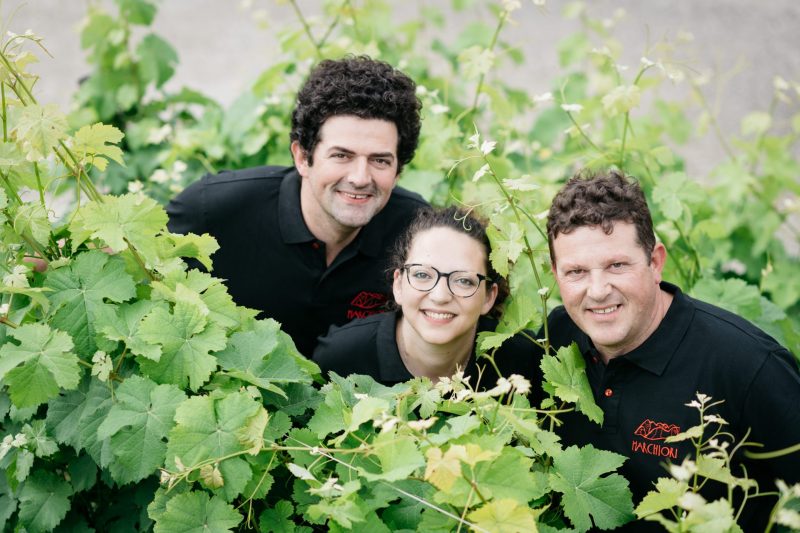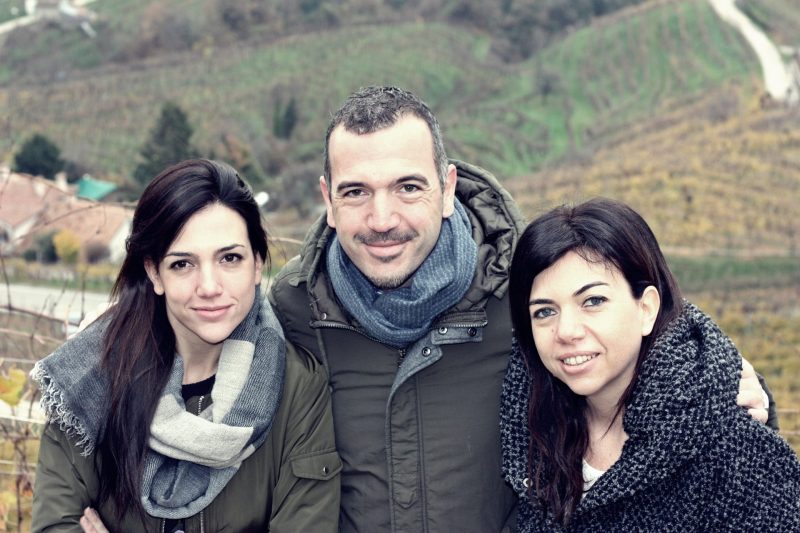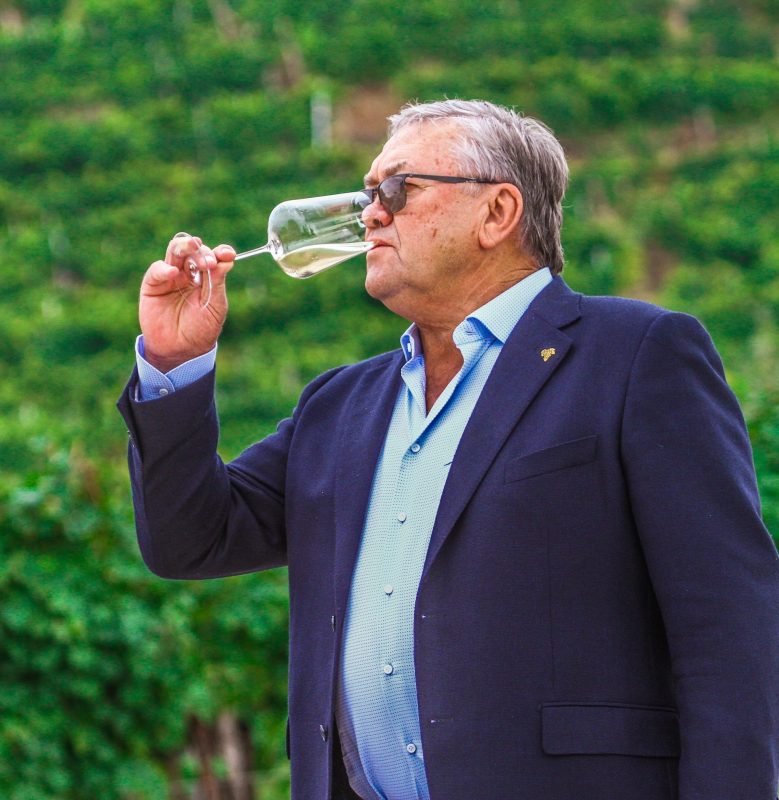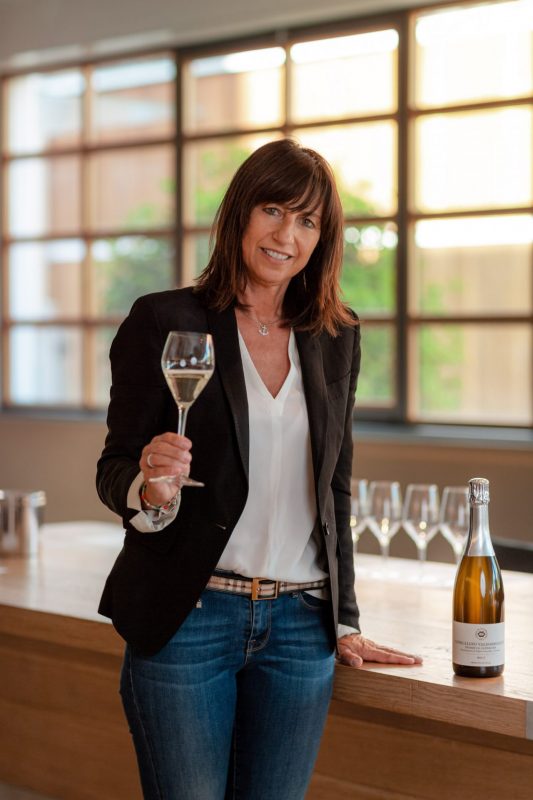The Prosecco universe is wide and differentiated, depending on whether we are talking about the Prosecco DOC “phenomenon,” with its more than 627 million bottles (including rosé), or Conegliano Valdobbiadene Prosecco Superiore DOCG, with a production of around 100 million bottles (respecting its wine-making traditions, the denomination has excluded rosé from its specifications).
The two denominations are fundamentally different, not only from a production quantity aspect, but also due to a series of other factors. The DOCG stands out for its hillside locations, lower yields, history, and care for the territory, and it is positioned at the top of the Prosecco world’s quality pyramid. In 2019, the Prosecco hills of Conegliano and Valdobbiadene were recognised as a UNESCO World Heritage Site. Working on the steep hills of the DOCG means dedicating 750 hours of manual labour per hectare per year, compared to 150 hours in the lowland vineyards of the DOC, which spans two regions: Veneto and Friuli Venezia Giulia.
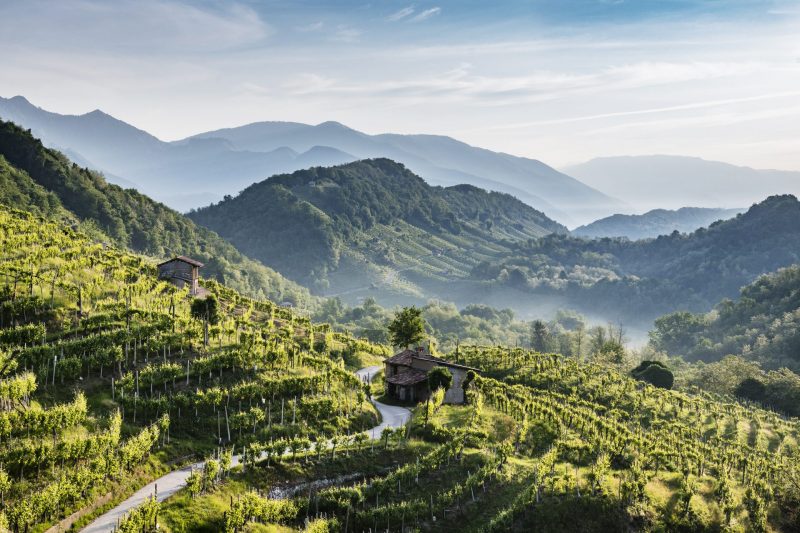
Conegliano Valdobbiadene has built the success of Prosecco over time throughout its unique history, creating a modern, informal, and cheerful Italian style of drinking that has been embraced the world over. Conegliano Valdobbiadene Prosecco Superiore DOCG is multifaceted and transversal. Unlike Champagne, a celebratory sparkling wine par excellence but with a high price, Conegliano Valdobbiadene Prosecco Superiore DOCG lends itself to a variety of occasions, not just celebrations, by virtue of its immediacy and affordability – which is also why it is even popular among young people.
A success that is the child of the territory, a beautiful landscape and popular destination for wine lovers, Prosecco is an international sparkling wine and the ambassador of a unique region.
Conegliano Valdobbiadene Prosecco Superiore DOCG – The area of origin
The Prosecco hills are lands of noble and sacred waters, moulded by the ancient Piave glacier and the epic river and waterways that converge from the morainic hills, creating an admirably designed amphitheatrical formation. A unique scene with hills cloaked in rows of lush vines. An incomparable multicoloured landscape that lives in paintings by Cima da Conegliano. Hills that vine dressers have shaped through toil and tenacity, where vine growing is heroic and almost exclusively done by hand due to the steep slopes that prevent mechanisation. Given the difficulty of establishing new plantations in a terrain that is too steep, one often comes across centuries-old vineyards, the guardians of a rich biodiversity.
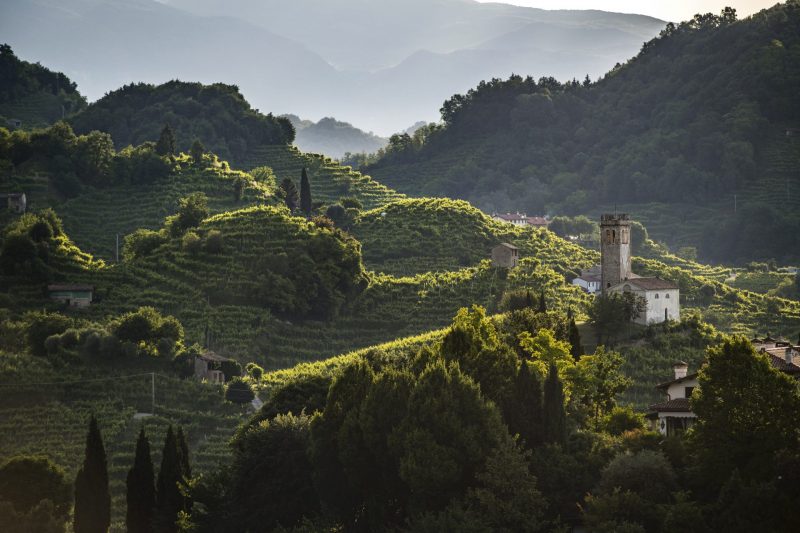
There are 15 municipalities in Treviso, northern Veneto, that the DOCG covers. Since the denomination’s establishment in 1969, the territory has never extended its boundaries despite the progressive increase in sales. The soils are highly diverse in nature with a wide geological variety. The carbonate rocks of the Cretaceous seabed form alternating geological layers of sandstone and marlstone, followed by moraine deposits and sedimentary layers of alluvial origin. The climate is mild and temperate, so much so that, in past centuries, the entire area was popular with Venetian nobles seeking to escape the heat of the lagoon in the summer months. The main grape variety of this sparkling wine is the rustic and vigorous native Glera. The sparkling winemaking method is Charmat.
“We are a laboratory of sustainability because it is our duty to take this path, for our children and for the consumers who choose us,” says Elvira Bortolomiol, the current chair of the Conegliano Valdobbiadene DOCG Consortium, founded in 1962. “We are aiming for the official birth of the Conegliano Valdobbiadene Biodistretto, the first case in Italy of an organic production system dedicated to sparkling wines. We have totally eliminated the use of glyphosate [a herbicide that is the active ingredient in products such as Roundup], and this makes us the most extensive glyphosate-free zone in Europe.”
A little history
This land boasts a long sparkling-wine tradition, which began in 1876 with the foundation of the Cerletti Institute in Conegliano, Italy’s first oenological school. The area’s winegrowing vocation, however, dates back millenniums. In the sixth century, Saint Venanzio Fortunato, bishop of Poitiers, referred to his homeland of Valdobbiadene as “a place where the vine germinates beneath the high mountains, where lush greenery protects the most barren areas.”
An important figure in oenological history is Antonio Carpenè. He is one of the first creators of Italian sparkling wine, founder of Carpenè Malvolti in 1868 and of Italy’s first oenological school, as well as a pioneer in the production of Prosecco. He promoted the development of the Conegliano area which, in 1853, had only one vineyard, while today, the vineyards in the DOCG area cover about 8,700 hectares.
The Gregoletto winery has roots in viticulture dating back to 1600. “What has happened in our territory in the last 13 years is unheard of in other areas,” says Giovanni Gregoletto. “There are no examples of anything this big conquering people’s palates in such a short time, being commercialised in so many markets around the world, and becoming so famous and in demand, even by young people.” The brand is so strong that people often order a Prosecco in Italy thinking they are asking for a generic sparkling wine.
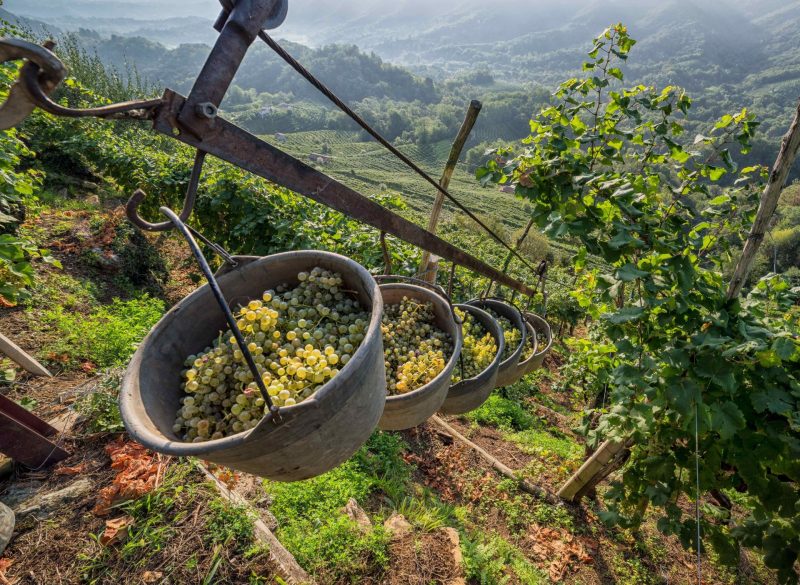
“Our land was in the hands of farmers, who worked with extreme difficulty on these steep slopes,” says Gregoletto. “We never had nobles or wealthy people behind us as in other Italian wine territories. Up until the 1970s, Carpenè Malvolti was the only winery with a dominant position. As times prospered, work began on a sparkling wine with characteristics that the world could easily understand. Prior to that, still wines were also made, and everyone drank a sparkling wine called Col Fondo, a wine left on the lees that re-fermented in the bottle. Consumption was purely local. Nowadays, everyone is a sparkling wine producer, but that was absolutely not the case until a few decades ago.”
Graziano Merotto, from the eponymous winery, is a 77-year-old who left the family business and founded his own winery in 1972. In the beginning, he produced Col Fondo and in 1979, he started producing sparkling wine using the Charmat method. “Back then, the economic possibilities were extremely limited,” Merotto recounts. “Col Fondo was sold directly at the winery, and it became popular. Prosecco has now become a big name that can be confused, especially abroad. I think that Conegliano Valdobbiadene Prosecco Superiore DOCG should be further enhanced. Producers need to be more committed to winegrowing: some of them, seeing the difficulties and costs of hill production, buy on the plain in the DOC area, where, with less effort and investment, they can earn more. That’s why it is essential to have a different price range between hill and plain versions. Our product, with its unique characteristics, cannot be undersold.”
Today
Differentiation is important. Those who think that the term Superiore, in reference to Conegliano Valdobbiadene, already distinguishes it from Prosecco DOC, should not ignore the work carried out in recent years on the DOCG hillsides. Look at the efforts made in territorial identity through AGUs (Additional Geographic Units) on the “Rive”, the local term for the very steep hillsides high in the hills and often examples of heroic viticulture. The Rive sum up the territory’s authentic values: landscape, human effort, tradition, and the characteristics of the soil and climate, all of which enhance the viticultural vocation of the 43 Rive. Always seen as the flagship of the denomination, they were further regulated in 2019.
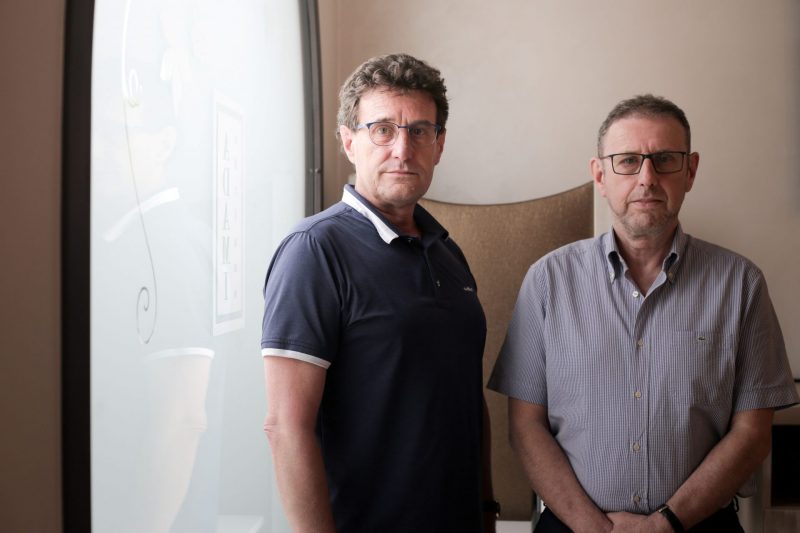
Franco Adami, from the Adriano Adami company, is one of the leading producers of Rive. In the early 1980s, together with his brother Armando, he took over the reins of an activity founded in 1933. “Rive wines correspond to three percent of the total production and have been constantly, and slowly, increasing since their regulation in 2019, although they have grown considerably in value,” says Adami. “We believe this is the right way to express the area’s evident differences (location, soils, exposure, altitude, microclimate, winemaking project). It will take at least one generation to appreciate the result of the work done on the Rive. We must continue to persevere on the road of promoting our differences.”
Alberto Ruggeri at Le Colture, second generation winemaker together with his sisters Silvia and Veronica, also believes strongly in the Rive. “It is an important opportunity to make people understand our unique territorial identity,” says Ruggeri. “Understanding why the Rive are usually about two euros more expensive is not immediate. It has to be explained, together with their uniqueness and longevity.”
Le Sorelle Bronca is one of the few female-run companies in the area. “The exploit on our land occurred around 2009, at the same time as we obtained the DOCG,” says Antonella Bronca, second generation winemaker. “It was different in my parents’ day, when the fashion had not yet begun. We mainly produced Col Fondo but, as time passed, we realised the importance of the Rive, and now we produce three (plots 68, 232, and 181) to enhance the differences in the soils. Sometimes it is hard to communicate our differences; it is important to come and visit these beautiful hills in person. I think we should improve communication and focus on wine tourism. Another important aspect to work on is positioning. The image of our area is high but not matched by adequate price differentiation between DOCG and DOC sparkling wines.”
The historical typology of these hills with their millenary tradition is Col Fondo, a sparkling sur lie regulated in 2019 by the DOCG as Sui Lieviti (on the lees). This typical method, which wine producing families traditionally used, has enjoyed renewed success in recent years thanks to its spontaneity, rusticity, and carefree drinkability. “We joined the ‘On the lees’ DOCG,” Bronca continues, “and we have noticed an increase, even if it is still a wine for enthusiasts that you either love or hate.”
“Our company has always produced Col Fondo,” says Alberto Marchiori, oenologist at the second-generation eponymous family business. “But my revelation came in 2008 when I tasted a 1992 vintage and really understood its longevity potential. We then did various experiments following my doctorate on the evolutionary dynamics of effervescent wines and arrived at our Integrale, which has steadily gained popularity. A traditional yet modern ‘On the lees’, judging by how much young people like it!”
One cannot forget the Grand Cru of Conegliano Valdobbiadene DOCG: Superiore di Cartizze DOCG. The golden pentagon, so called because of its shape, can trace its history back to the 14th century through the sale deed, dated 1408, of a 108-hectare patch of land divided among 143 families. It is a well-suited hill: the microclimate and soil create a natural oasis for cultivation, favouring the growth of healthy vines and giving the sparkling wine unique and particularly valuable characteristics.
Let’s travel then with a glass of Conegliano Valdobbiadene Prosecco Superiore DOCG among these World Heritage hills. But why not also visit them in person? It will be an opportunity to experience and understand in person the cultural and historical significance of a wine that is too often misunderstood.
Alessandra Piubello, a journalist, writer, editor and expert wine-taster from Verona, has an innate passion for wine. Born in Italy’s Valpolicella wine area, she, from a young age, began helping her father tend his vines and make the family wine. She began wine-tasting at the age of 8! Alessandra is the co-editor of the Veronelli Guida Oro I Vini wine guide – the first woman to hold this role in the guide’s thirty years. She collaborates with leading Italian and international wine magazines and is author for L’Espresso’s Ristoranti d’Italia guide. She has written several books and judges frequently at international wine competitions. She teaches at Luigi Veronelli Italian Gastonomy High School.

